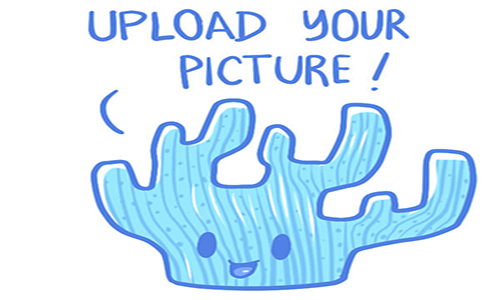- Name:
Left Behind Favia
(View AKA's) - Family: Faviidae
- Species: Favia
- Scientific Name: Favia sp

General info about Left Behind Favia
In general, the genus Favia have large coral colonies that are circular in shape and comes in the form of massive, submassive and encrusting type. At a first glance, you can mistakenly identify Favia with Favites. However, with a closer look, Favia and Favites can easily be differentiated. Favites have corallite walls that are fused while Favia species are not where each corallite has its own wall. You can clearly see this difference when the polyps are retracted.
For the Left Behind Favia, they are predominatly colored blue violet with violet mouth. This are the water parameters for cultivating Left Behind Favia:
- Calcium: 400 - 450 ppm
- Alkalinity: 2.86 - 3.93 MEQ/L (8 - 11 dKH)
- Phosphates: 0
- Magnesium: 1200 - 1350
- Strontium: 8 -10
- Temperature: 74° - 83° F (23° - 28° C)
- Salinity / Specific Gravity: 1.023 - 1.025
Left Behind Favia Diet & Nutrition
Left Behind Favia can survive without feeding courtesy from the nourishment it recieves from the symbiotic zooxanthellae that is living within them. However, they will not grow in to a bigger colony. With this and for faster growth, you need to feed them with supplemental foods like krill, mysis or brine shrimp. The addition of dissolved organics is also recommended.
Fragging / Propagating Left Behind Favia
A mature tank is highly recommended in propagating Left Behind Favia. They need to be set at the bottom portion of the tank where lighting and flow rate are in moderation.
Flow / Lighting Requirements for Left Behind Favia
Left Behind Favia requires moderate lighting and moderate water flow. Too much water flow causes the polyps to be retracted and feeding cannot take place.
Parasites & Diseases that Affect Left Behind Favia
Left Behind Favia is susceptible to hair algae. This ussually occurs if the water flow is too low or not sufficient.
Left Behind Favia Origin
Left Behind Favia can be found in the Indo-west Pacific Ocean. However, their global population is considered vulnerable due to increasing seawater temperature and other factors associated with climate change. They are now listed under Appendix II of the Convention on International Trade in Endangered Species (CITES), which means that their global trading is now monitored.
Caution Should be Taken with Left Behind Favia
Left Behind Favia must be set in the tank with enough spacing in relation to other coral species.
How to Acclimate Left Behind Favia
Since the Left Behind Favia are a marine species, salinity must be entirely maintained at 1.023 to 1.025 specific gravity. They should be immediately set to its receiving substrate like rocks and be permanently positioned using gel glue so that the colonization process can commence.
Stinging Tentacles on Left Behind Favia
Left Behind Favia have long sweeper tentacles. If they are set near to another coral, they will extend out their tentacles and invade other polyps which has been proven to cause mortality.
Original Detail
| Name | Species | Family | Scientific Name | More Detail | Added by |
|---|---|---|---|---|---|
| Left Behind Favia | Favia | Faviidae | Favia sp | In general, the genus Favia have large coral colonies that are circular in shape and comes in the form of massive, submassive and encrusting type. At a first glance, you can mistakenly identify Favia with Favites. However, with a closer look, Favia and Favites can easily be differentiated. Favites have corallite walls that are fused while Favia species are not where each corallite has its own wall. You can clearly see this difference when the polyps are retracted. For the Left Behind Favia, they are predominatly colored blue violet with violet mouth. This are the water parameters for cultivating Left Behind Favia:
|
PalaciosAn |
Changed by users
| Submitted Date | Submitted By | Status | Action |
|---|


